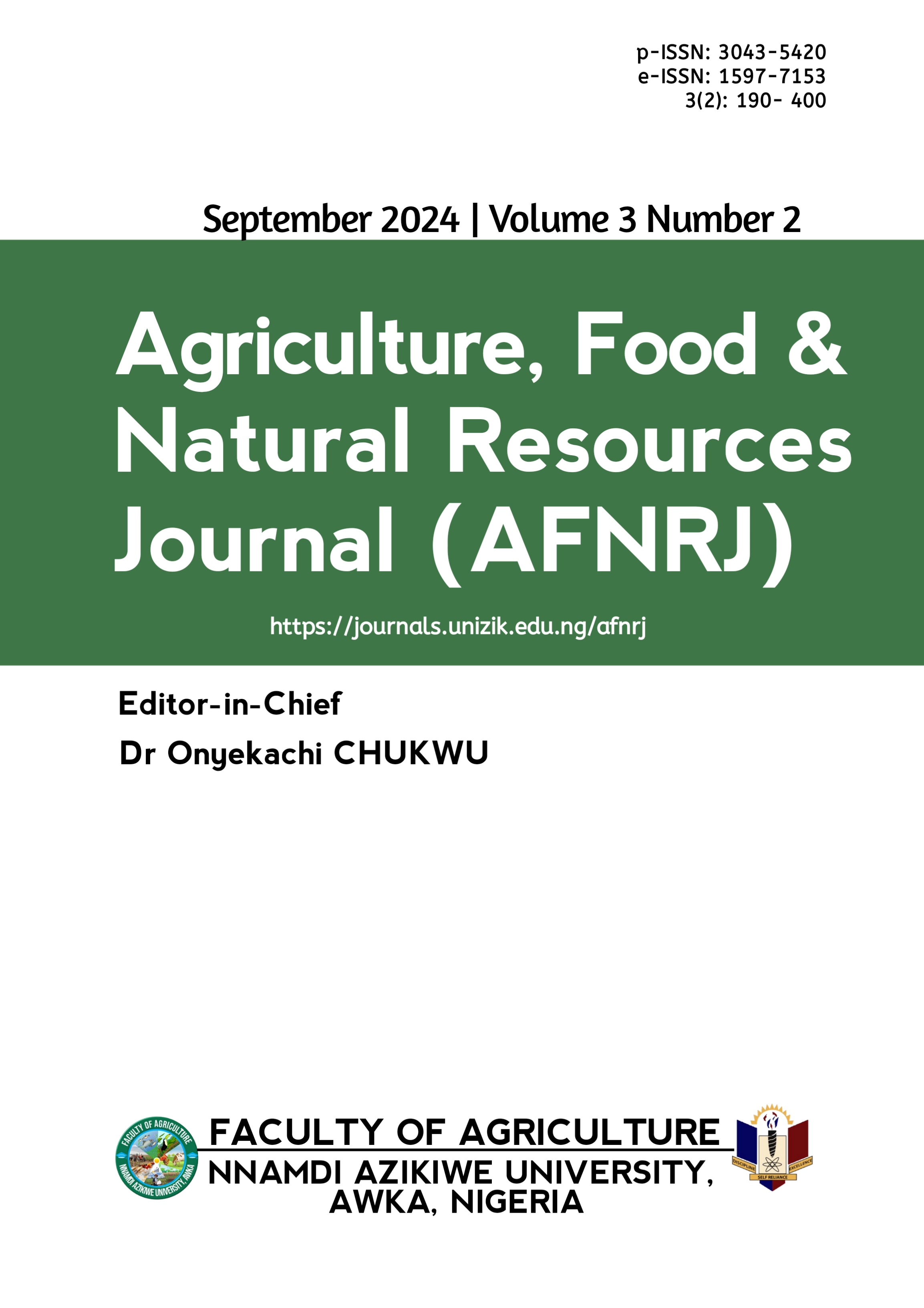Production and characterisation of corn chaff briquette using cassava starch and gum Arabic as binders
DOI:
https://doi.org/10.5281/zenodo.14210301Keywords:
Ash content, Calorific value, Corn chaff, Moisture contentAbstract
This study was undertaken to determine the production and characterisation of corn chaff briquettes using cassava starch and gum Arabic binder. The wet corn chaff was sun-dried to a moisture content of 12%; it was milled using a hammer miller and sieved using a 2 mm particle-size mesh screen for consistency purposes. The briquette samples were produced by separately mixing 60 g of corn chaff with starch and gum Arabic at binder levels 10, 15, and 20 g. The experiment was conducted to determine physical properties (density, moisture content, stability, and shatter index) and proximate analysis (volatile matter, ash content, fixed carbon, and calorific value). The data collected was analysed using Analysis of Variance (ANOVA) in a completely randomized design (CRD) at p<0.05. The results show that binder type and binder level significantly influenced the briquettes' moisture content, ash content, and calorific value. The highest density of 495.87 kg/m3 was obtained at 20 g in starch-bonded briquettes. Similarly, starch-bonded briquettes at 10 g had the highest shatter index of 99.68%. On the other hand, gum arabic-bonded briquettes at 20 g had the lowest moisture content of 5.56% at 10 g binder level; the briquette recorded the lowest ash content, highest fixed carbon and calorific value of 1.36%, 85.11%, and 33.67 MJ/kg1 respectively. Therefore, gum Arabic briquette proves to have a higher energy value than starch briquette, while in terms of binder level, 10 g proves better. However, corn chaff could be recommended as a good and acceptable feedstock to achieve sustainable energy
Downloads
Published
Issue
Section
License
Copyright (c) 2024 Authors

This work is licensed under a Creative Commons Attribution 4.0 International License.
which permits unrestricted use, distribution, and reproduction in any medium, provided the original author and source are credited.
Authors retain the copyright of their published work in the AFNRJ.





